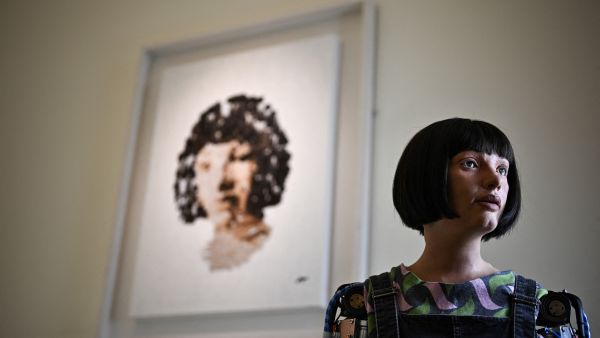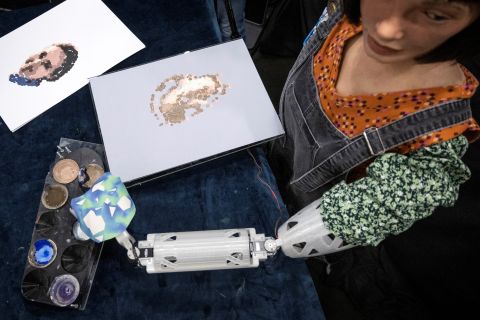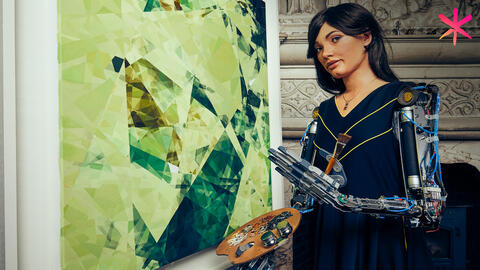ALBAWABA - Ai-Da, the world's first ultra-realistic artist robot that is capable of drawing and painting using cameras in her eyes, AI algorithms, and her robotic arm, sells her Portrait of English Mathematician for $1 million.
Ai-Da sells ones of her artworks for $1 million
Sotheby's, one of the world's largest brokers of fine and decorative art, jewelry, and collectibles, announced the sale of Ai-Da's Portrait of English Mathematician Alan Turing at auction.
The portrait, which sold for over $1 million, became the first artwork created and sold by a robot at a major auction, according to Sotheby's.
“Today’s record-breaking sale price for the first artwork by a humanoid robot artist to go up for auction marks a moment in the history of modern and contemporary art and reflects the growing intersection between AI technology and the global art market,” stated Sotheby’s.
The Portrait of English Mathematician “A.I. God,” illustrates Alan Turing, the famous mathematician and computer scientist.

Ai-Da deploys artificial intelligence algorithms and contains cameras in its eyes, along with electronic hands. (AFP)
Ai-Da, the robot, commented: “The key value of my work is its capacity to serve as a catalyst for dialogue about emerging technologies. Portrait of pioneer Alan Turing invites viewers to reflect on the God-like nature of AI and computing while considering the ethical and societal implications of these advancements.”
Ai-Da a robot with human features
Ai-Da was designed to resemble a human female, featuring a face, large eyes, and a brown wig. The robot deploys artificial intelligence algorithms and contains cameras in its eyes, along with electronic hands.
Created in 2019 by Aidan Meller, a specialist in modern and contemporary art, Ai-Da was developed in collaboration with scientists from the Universities of Oxford and Birmingham. The robot’s name is inspired by Ada Lovelace, the world’s first computer programmer.











